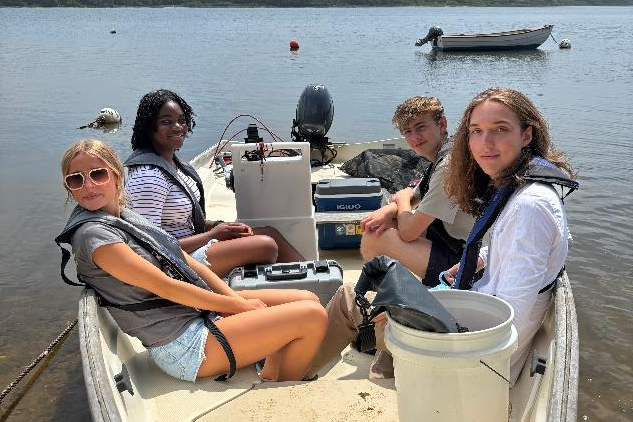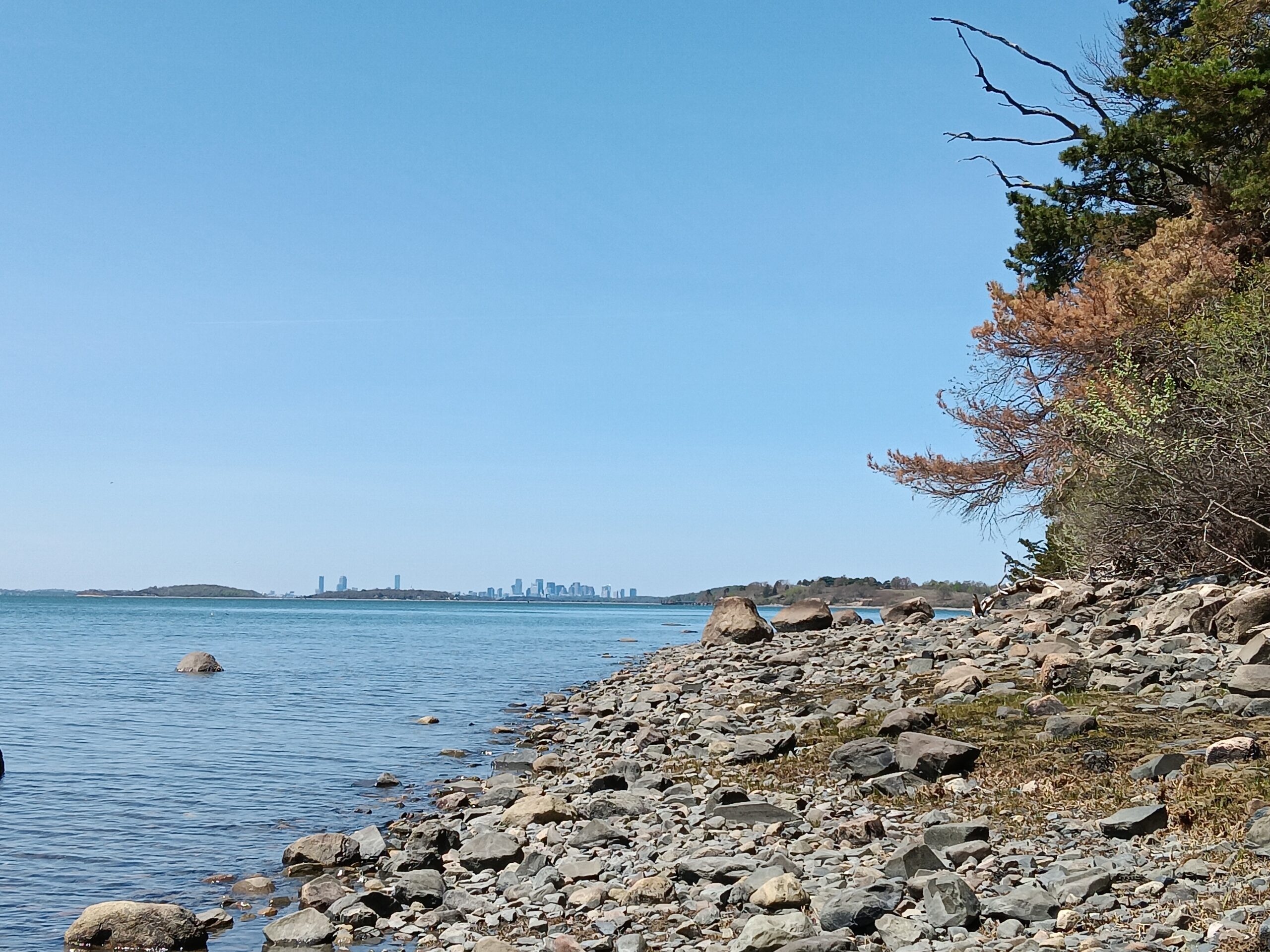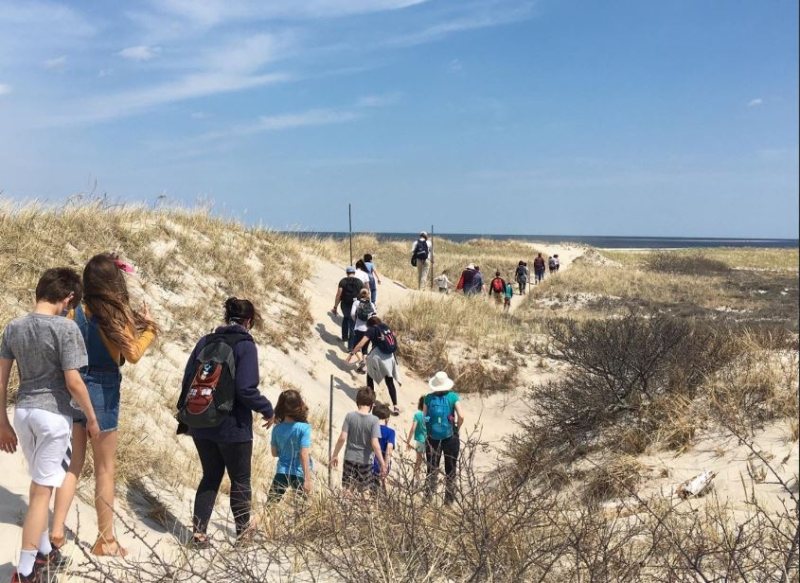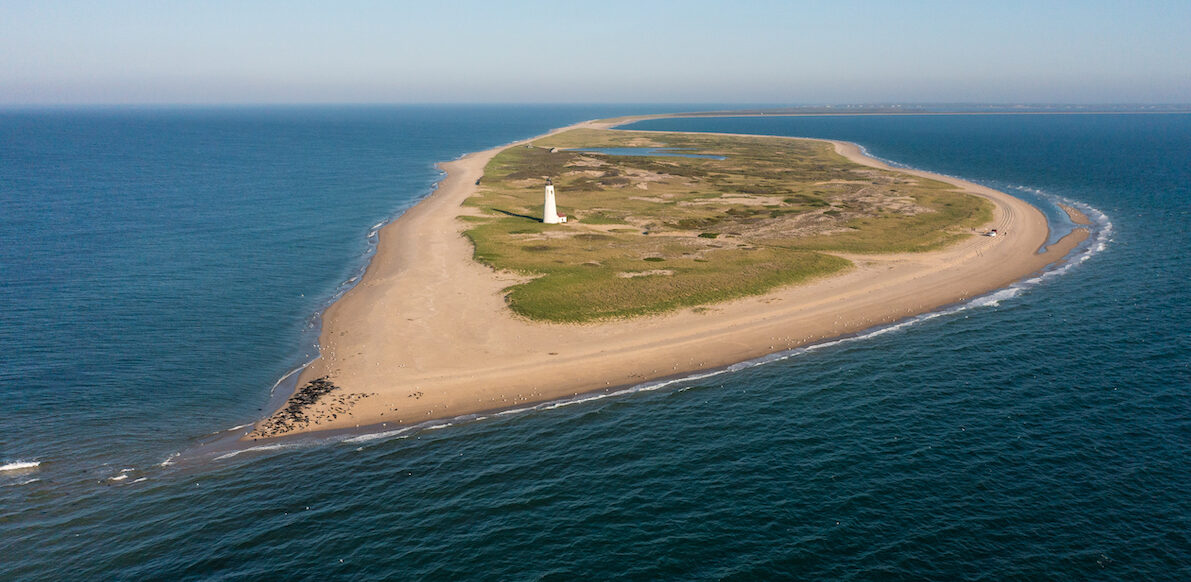
Coskata Coatue Wildlife Refuge. Photo by Above Summit.
Over the past year, the Nantucket Conservation Foundation (NCF) and The Trustees have been working with GZA GeoEnvironmental to study coastal risk and resilience on Coskata-Coatue Wildlife Refuge. Climate change and sea level rise threaten to create a breach along the eastern shore of the refuge, allowing open water exchange between the Atlantic Ocean and Nantucket Harbor. NCF and The Trustees hope to use nature-based designs to increase habitat resilience, reduce flooding, and maintain the viability of this unique barrier beach system.
GZA is ready to present their alternatives analysis and preferred options for preserving this community treasure. NCF and The Trustees will hold a virtual public meeting on May 27th at 6pm to present findings and discuss resilient designs for three critical locations: Coskata Pond, Coskata Woods trail, and the Haulover. We welcome you to register for the event and learn about the preliminary designs being considered to ensure Coskata-Coatue remains a place where wildlife can thrive and humans can enjoy for many generations.
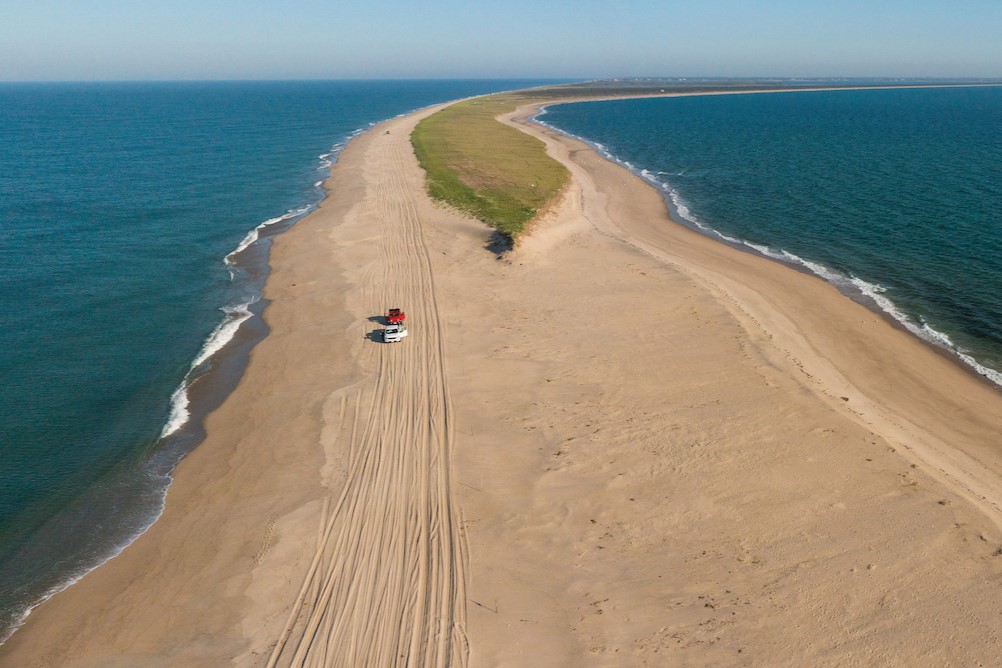
Coskata Coatue Wildlife Refuge. Photo by Above Summit.
Challenges on the Refuge
As a barrier beach, Coskata-Coatue Wildlife Refuge faces many challenges due to climate change, including increased erosion and flooding from storm surge and sea level rise. As stewards of this refuge, NCF and The Trustees have been seeking solutions to protect Coskata-Coatue for the wildlife that depends on it and for the people who enjoy it, all while maintaining its unique ecology and beauty.
Areas of interest include the narrow barrier between Coskata Pond and the Atlantic Ocean, the Haulover, and the Coskata Woods trail. These areas have been identified as being vulnerable to sea level rise, wave action, and flooding and are some of the most heavily visited sites for recreation. The alternatives being considered are informed by an extensive site assessment, using multiple kinds of short- and long-term data, with consideration for public access and dune, beach, and wetland ecology.
Based on a draft feasibility report from GZA detailing their approach and alternatives considered for the sites, there are several nature-based solutions that NCF and The Trustees are interested in exploring further. The solutions are scalable and adaptive techniques, which are designed to work with natural coastal processes to build resilience over time. These include living shorelines, native plantings, microtopographic changes, and continuous trail management, all options that facilitate natural habitat migration rather than introduce stifling hard infrastructure. These will be discussed in depth during the public meeting and are briefly explained below.
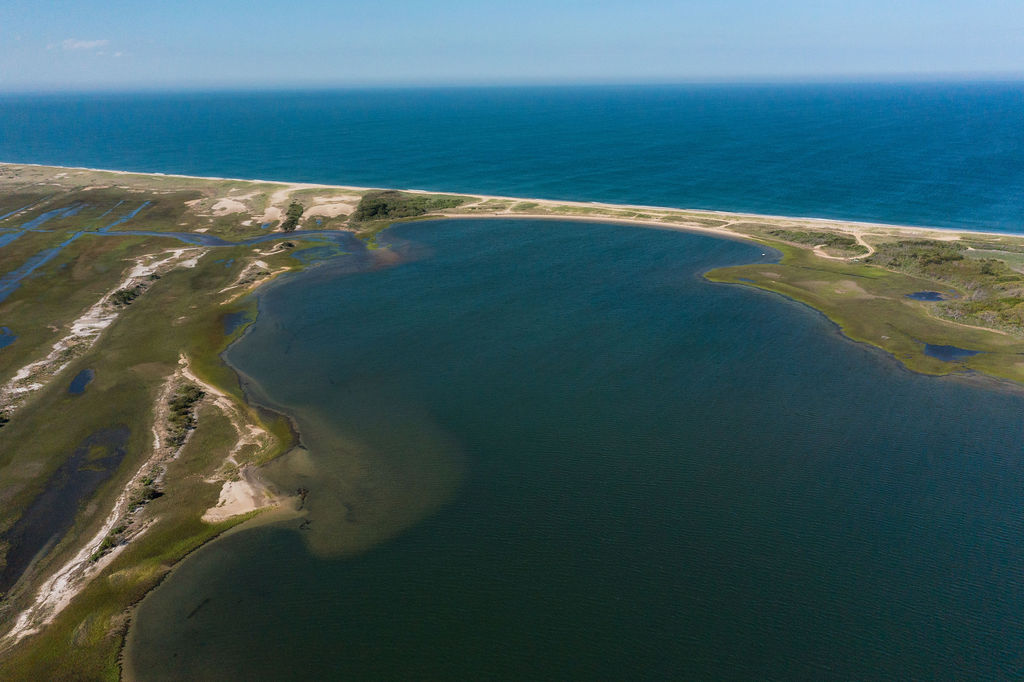
An aerial of Coskata Pond. Photo by Above Summit.
Solutions
Living Shoreline – Coskata Pond
The barrier beach and dune system between Coskata Pond and the Atlantic Ocean has been narrowing over time. This has led to an ever-increasing potential for over wash and a breach through the dunes. A breach would allow water to flow between the ocean and the Pond, increase erosion and flooding in surrounding habitat, and eliminate Over-Sand Vehicle (OSV) access to the rest of the refuge. Occasional over wash from storms will not impact the Pond dramatically but will weaken the resilience of the dune system.
While a breach through the beach system would close over time, the dune system would be dramatically weakened and the ecology of the pond impacted. One option to mitigate this risk is creating a living shoreline on the inside shore of the pond using a stabilizing oyster reef and plantings. The oyster reef would be made as a constructed reef with small, interlocking, blocks of concrete which provide a substrate for oysters to attach and grow.
A constructed oyster reef would serve several purposes. In the short term, active vegetation planting would work in tandem with an oyster reef to stabilize sediment and reduce erosion by attenuating wave energy. Over a longer period, the established living shoreline would serve as a sediment trap, capturing sand that gets deposited through over-wash events and widening the dune while increasing salt marsh habitat within Coskata Pond.
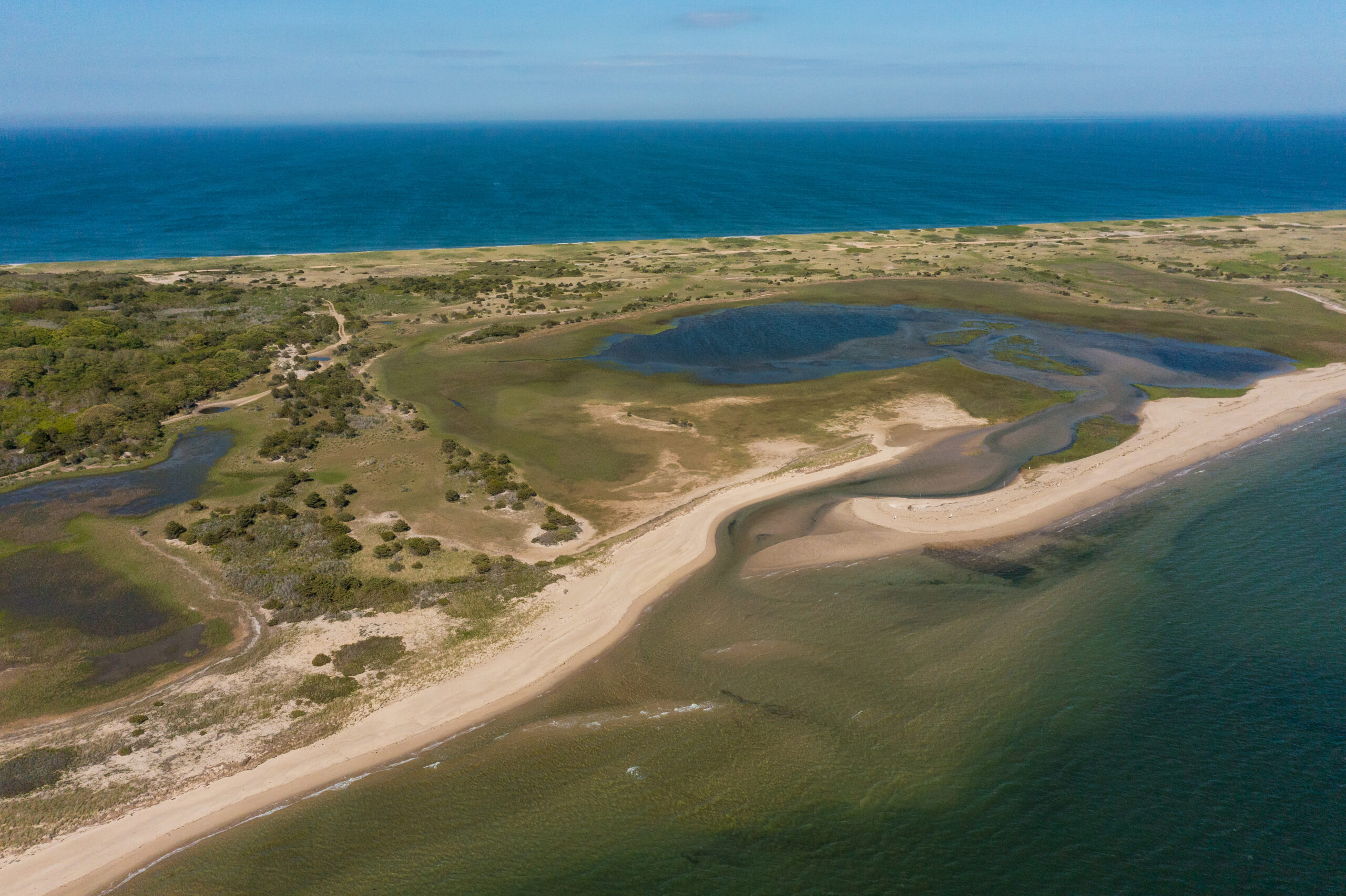
Living Shoreline – The Haulover
In addition to the slow creep of sea level rise, shoreline erosion on the harbor side of the Haulover is an increasing threat due to higher wave energy and storm surge. The Haulover contains a large salt marsh that holds flood water. The smaller dunes along the harbor shoreline that protect this salt marsh are eroding, leading to increased flooding at the Haulover.
To address this increased flooding, GZA has presented an option to utilize a constructed oyster reef in tandem with oyster reef balls. Oyster reef balls are large, hollow concrete balls which provide substrate for oyster growth and can buffer wave action themselves. These, along with active vegetation planting, would help attenuate wave action before it hits the shoreline, reducing erosion along the barrier dune that protects salt marsh habitat in the Haulover interior. This focus on shoreline stabilization would also reduce flooding on the interior trails, increasing the resilience of OSV access routes at the entrance to the refuge.
Plantings with Small Scale Topographic Changes
The increased flooding in the aforementioned salt marsh system at the Haulover is impacting the ability of native marsh grasses to establish and trap the sediment suspended with each incoming tide. One way to assist the marsh in adapting to climate change is to actively plant native plant species to enhance habitat complexity and to make small-scale topographic adjustments to improve marsh stability and resilience. This site provides an opportunity for The Trustees and NCF to pilot innovative sediment trapping techniques that improve marsh health over time and stabilize the dynamic tidal system, building long-term resilience that would be imperative if a breach were to occur at this site.
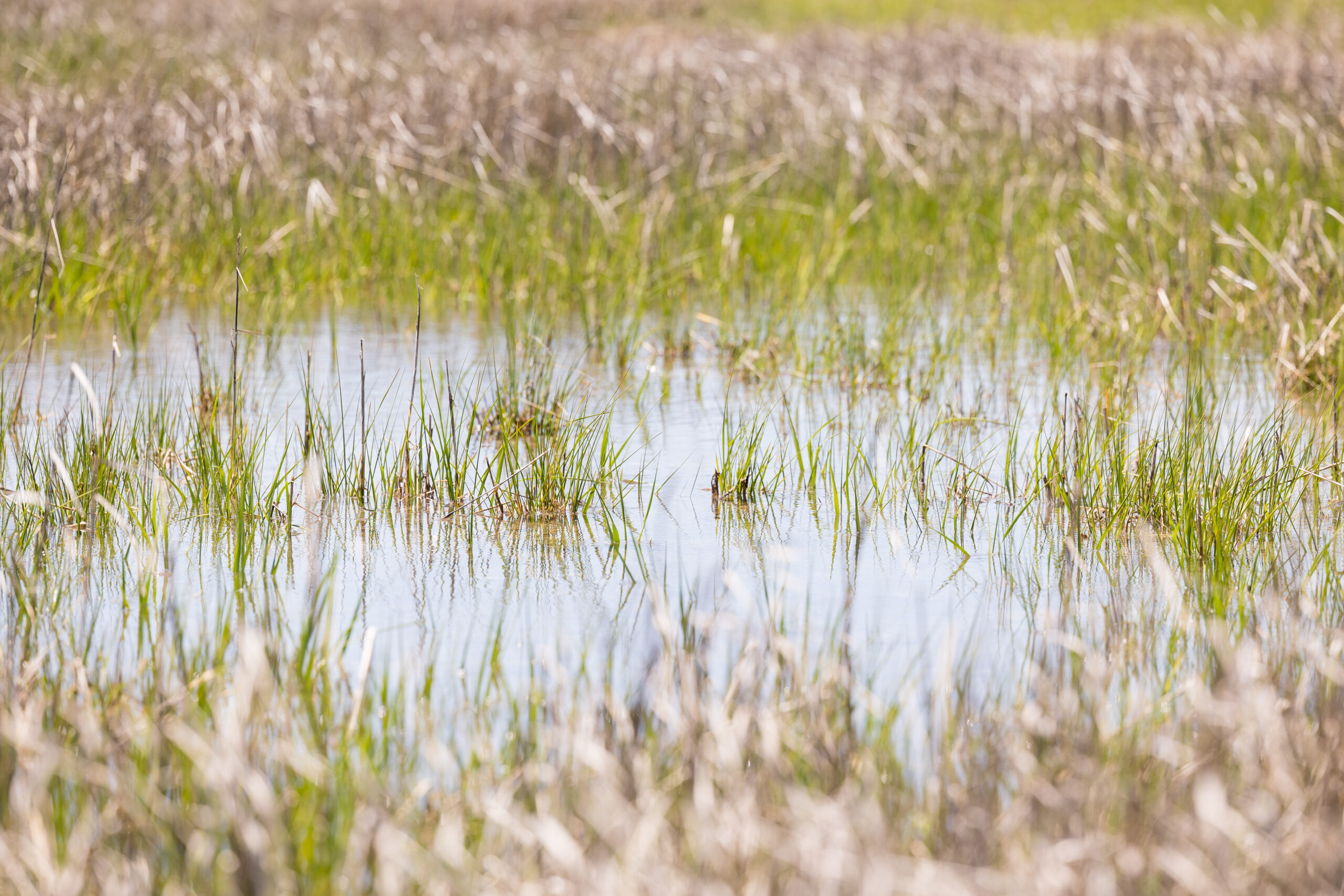
Flooding in low-lying areas. Photo by Above Summit.
Trail Restoration – Addressing Flooding and Low-lying Spots
Some of the lower lying trails along the Haulover and through Coskata Woods flood consistently with higher tides and are uneven, with large indentations that hold water for long periods of time. To address this, GZA has recommended maintaining low-lying areas with a mix of sand and locally sourced oyster shells. This would create a stable trail surface for continued pedestrian and OSV access to the interior of the refuge while allowing water to flow through the trail as needed. This method would require annual maintenance by NCF and the Trustees to keep the trail at grade, given that oyster shells would compact with use over time.
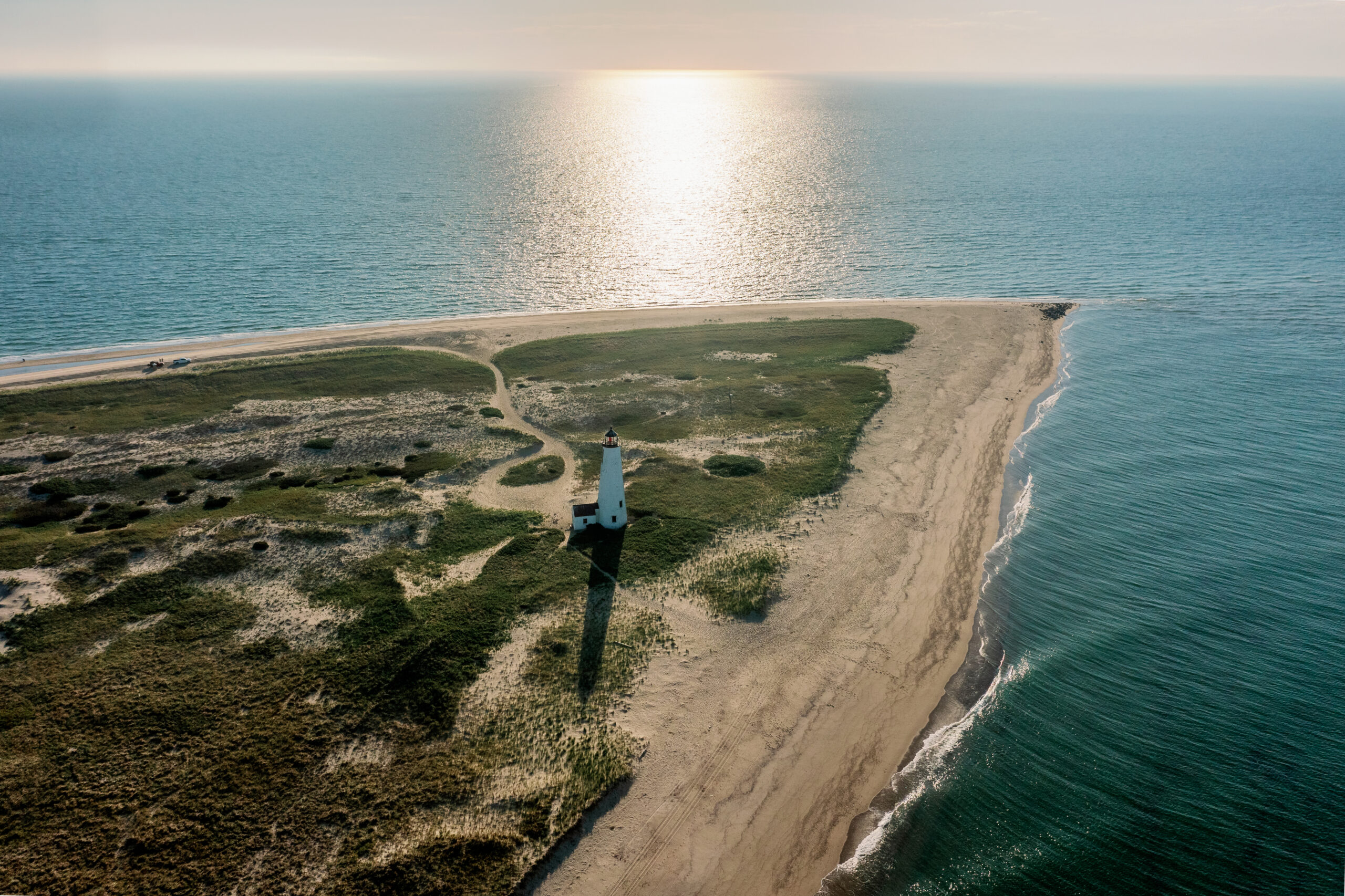
Coskata-Coatue Wildlife Refuge. Photo by Above Summit.
What’s Next?
The process of evaluating threats to Coskata-Coatue Wildlife Refuge and assessing potential solutions is complex and has involved the input of professionals and the public alike. At our last public meeting we received public input, which informed the organizations’ work with GZA in considering alternatives. We look forward to sharing more soon!
How You Can Support
Join us at Sunset Soirée, August 22 at Coskata-Coatue Wildlife Refuge!
100% of event proceeds support the protection and stewardship of Coskata-Coatue. Invite your friends and enjoy a special evening of community building and positive impact.
Your adventure begins with a scenic drive over sand to a seaside tent where you’ll find live music, a delicious raw bar, beach games, and an inviting campfire. Hear from community leaders and special guests as they share updates on conservation efforts at the refuge. Gather with friends and neighbors to celebrate the natural beauty of Coskata-Coatue and its important role as a barrier beach.
Click here to register and learn more about the event! We hope to see you there.
You can also learn more about joining The Trustees as a Great Point Circle Member and join a special group of people who care about protecting Coskata-Coatue Wildlife Refuge and who want to support its care in a meaningful way.
You can also support our work and efforts to implement resilience projects at vulnerable locations, by making a donation here.
